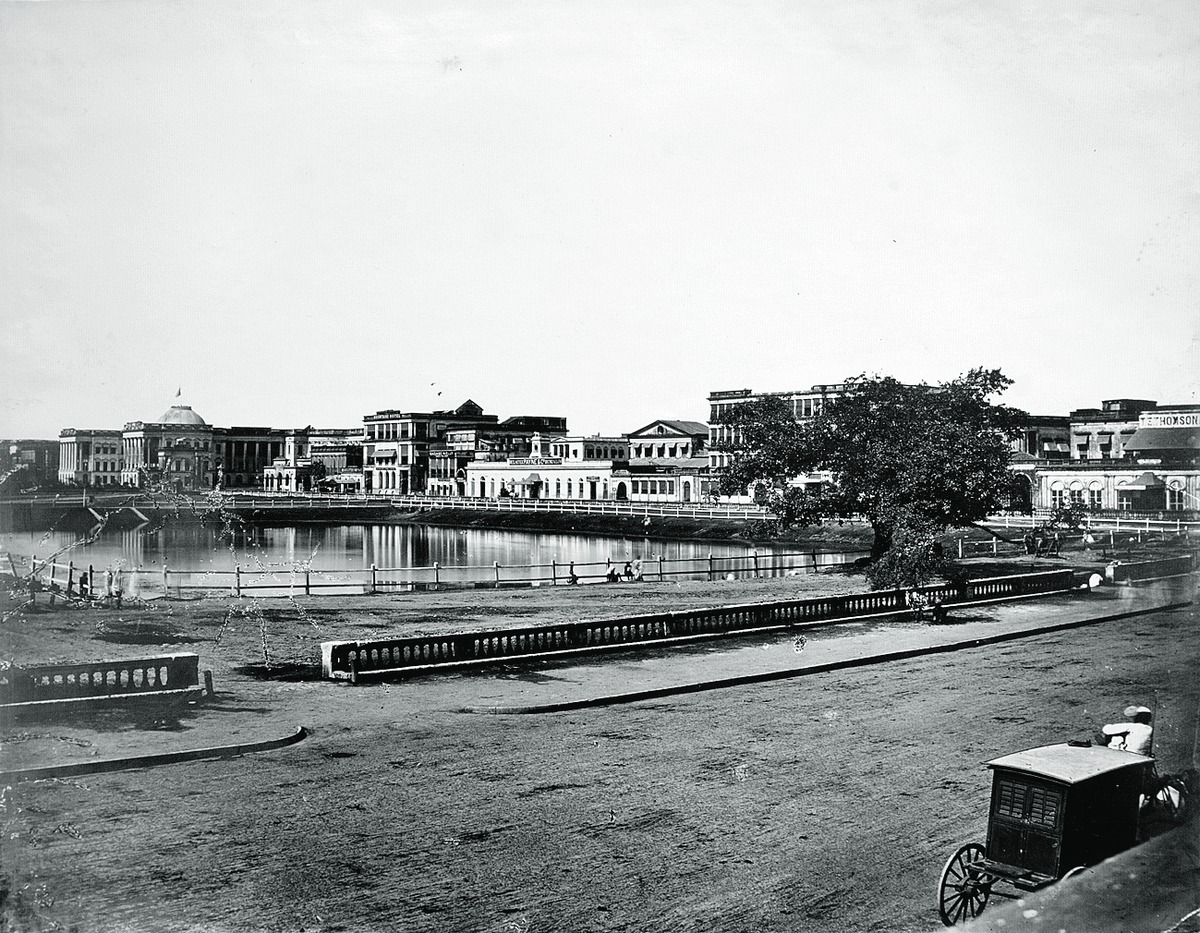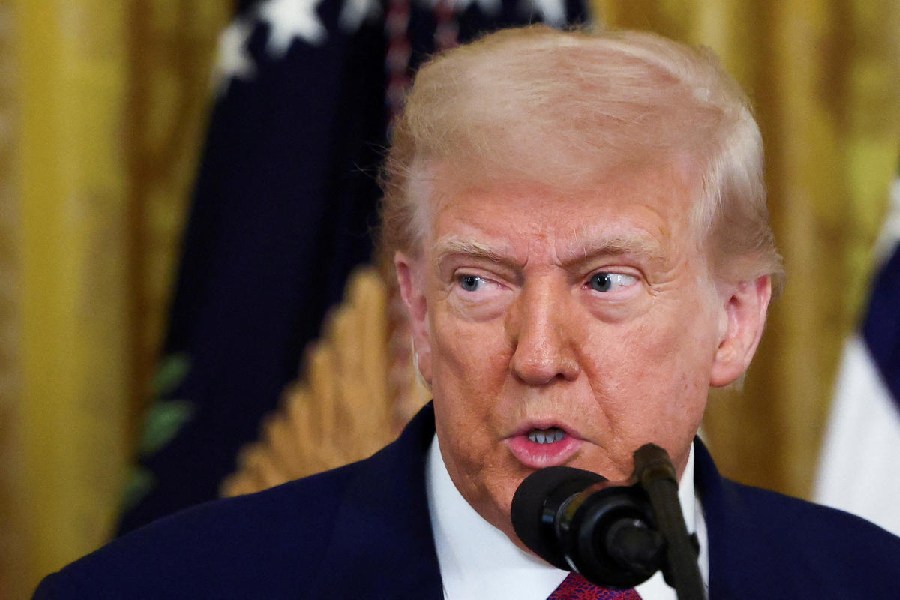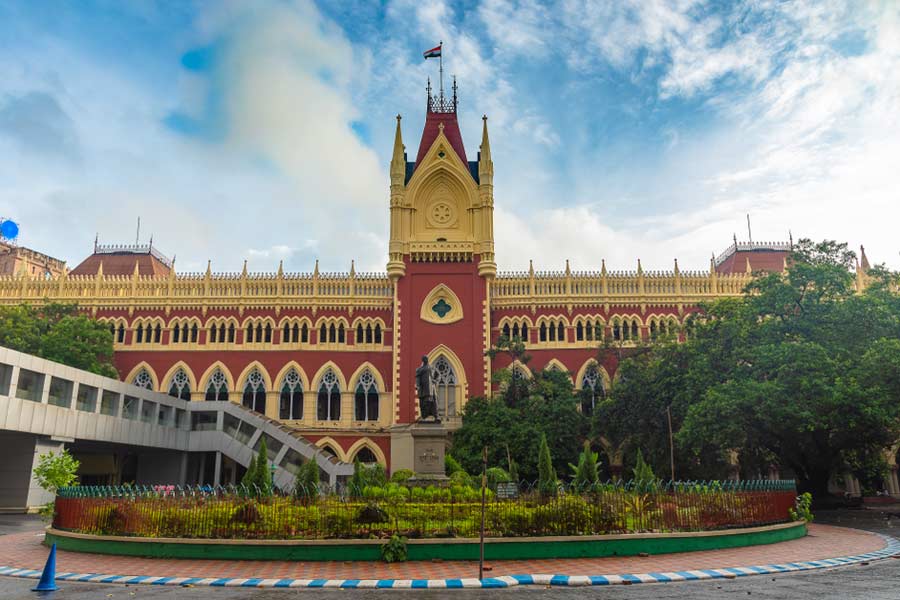
However much Ganesh Pyne (1937-2013) may have been admired for the poetic and enigmatic quality of his paintings, few are aware that at the beginning of his career in the early 1960s, he had painted a series of cartoons for an animated film, if only to eke out a living. This series was seen for the first time in an exhibition, Ganesh Pyne - Mandar Studio, Cornwallis Street (January 23-March 4), organized by Aakar Prakar. It demonstrates how Pyne's vision had evolved, and how even in the paintings of his mature years, one can clearly detect traces of the figures he had created for fun under the influence of Walt Disney.
As the title suggests, Pyne worked under a man of many parts named Mandar Mallik, who belonged to a Berhampore zamindar family. Mallik was so obsessed with cartoons that he decided to make animation films with home-made equipment, and even corresponded with the great Disney himself. Many well-known commercial artists of those times worked in his Cornwallis Street (Bidhan Sarani today) studio, and Mallik, taking upon himself the responsibilities of both director and cameraman, made several cartoon films in the 1930s. Queen Anopheles, commissioned by the Calcutta Municipal Corporation, Amar Lipi, an ad film based on a story by Tolstoy but actually promoting P.M. Bagchi's fountain pen ink and an underwater fairy tale were the three films Mallik made. However brilliant he may have been, Mallik was never a success for he could be difficult.
When Pyne met him, Mallik was a defeated man. The primitive animation technique he used required Pyne to make hundreds of sketches everyday to indicate even the slightest movement. It was then that doodling became Pyne's second nature. Pyne was employed in Mandar Studio as the only animator from 1962 to 1977, during which period several ad shorts were made on subjects as diverse as coffee, manure and poultry, along with a black-and-white feature, Kalo Beral, which is lost. Pyne also created several storyboards - the stories of Aladdin, the imp and the ogre and Panchatantra tales. The storyboard of a Panchatantra tale was displayed at the exhibition.
Pyne's cartoon creatures are pure Disney. The jackal is too clever by half. The lion egotistic. The ape wise and canny. The fawn is wide-eyed. The owl is true to its name. The little birds, the frog, tortoise and giraffe are all characterized by idiosyncrasies of their own.

It is a typical animal fable about how a jackal slavers over the forest's birds and herbivores, but how his evil plans come to naught as the wild animals led by the wise monkey, literally walk over the wily one and his vainglorious companion, the lion, who had been crowned the king of the glade (picture, top).
Pyne had also done some beautiful, probably imagined, horizontal landscapes. These too were on display. The bare land with clumps of trees and scrub (picture, bottom) adumbrates the sophistication of his later work.
It is true that Pyne's animals are faithful to Walt Disney, but he did make an attempt to Indianize the visualization. Indeed, a giraffe could not possibly be found in an Indian jungle, but the manner in which the forest clearing is being decked out with chains of fresh mango leaves is typically Indian. The crown that the lion wears is adorned with a peacock feather. Krishna, too, wears this on his head.
What is most interesting is the manner in which Pyne, later in his life, transformed many of these images, applying darker and murkier shades to add depth and ambivalence to his vision. The artist had once said in an interview: "Animated films had given me the freedom and conviction to defy logic."
Pyne continued: "I could easily shake off the burden of the rigid and moribund art college [the artist had attended the Government College of Art & Craft] education. Ecstasy and freedom were mine... In art college we learnt to draw natural form realistically... We were told that distortion is a key element of modern art. However, if there is any science or logic of distorting form we were never really taught that... Art college never provides answers to these questions. So each artist arrives at his own technique of distorting form."
Over the years, a toon had become a terror. Thanks to the lesson of distortion he learnt from animation, the cartoon lion and the nightmare form in his later work share the same contour lines. As he progressed, Pyne moved further away from cartoons. But the basic form derived from them remained.










